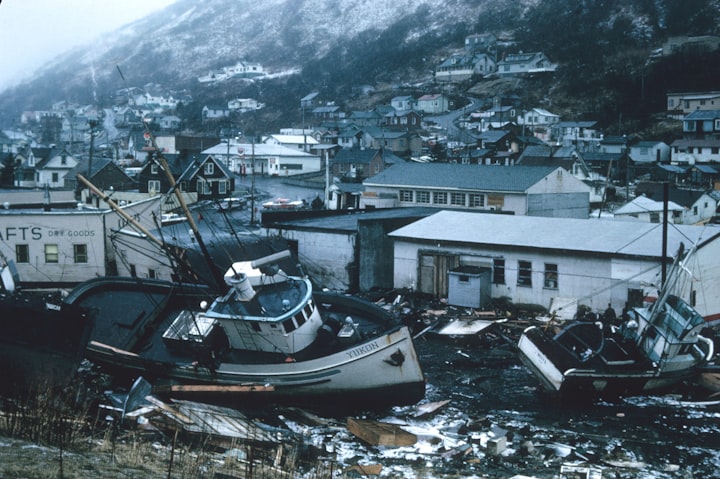Most California coastal protection agencies go through a rigorous process of identifying tsunami hazards by marking specific areas showing the magnitude of flood areas, migration routes, and appropriate measures in the event of a single earthquake. . There are also official warnings from tsunami warning centers broadcast on radio, television, wireless emergency warnings, NOAA Weather Radio, NOAA website, and social media. These alerts come from outside alarms, local officials, messages, and phone alerts.
When a tsunami is on the way, you do not want to be near the sea. If the source of the tsunami is near the sea, the tsunami will arrive within an hour. The water will recede after the earthquake or off the coast, but when the tsunami becomes severe, it is on its way.
Tsunamis are triggered by violent sea movements, accompanied by earthquakes, landslides, mudslides, mountain falls, and meteorite impacts. Tsunamis travel along beaches, but they can also travel on open seas.
Tsunamis can be caused by landslides, volcanic eruptions, or meteorite impacts on the oceans. Tsunamis are usually the result of surface water eruptions caused by volcanic activity or the impact of a meteorite. But it can also be caused by earthquakes and sudden changes in the ocean.
On average, two tsunamis occur annually around the world, causing damage to all sources. Between 10 and 15% of destructive tsunamis are caused by earthquakes.
Severe or slippery earthquakes are more likely to cause tsunamis than direct earthquakes. Tsunamis with waves create waves when water enters the interior, and in the case of a tsunami, the flow of water inland is large, giving the image of a large and strong wind. Subtermination can also lead to tsunamis when landslides release objects, penetrating inland and pushing water in front of them.
The term tide wave has become unpopular in the scientific community in recent years since the cause of tsunamis and waves is not caused by the movement of water but by the movement of the moon and the sun. The term "wave earthquake" refers to the state of the waves propagated by an earthquake such as an earthquake.
Tsunami waves are caused by the sudden movement of the ocean surface as a result of earthquakes, landslides on a sea or land surface, sea collapses, massive volcanic eruptions, or meteorite impacts on the ocean. Tsunami waves and earthquakes are not correct because apart from earthquakes, including underwater erosion, volcanoes, eruptions, landslides, sea meteorites, and climate change, and atmospheric pressure, can also create such waves of water movement. A tsunami can also be called a wave, but this name does not deter the generation of tsunamis because the waves are formed by the gravitational pull of the Earth, Moon, and Sun.
A tsunami is a series of tidal waves caused by earthquakes, landslides, volcanic eruptions, or asteroids. A tsunami can kill or maim people, damage or destroy buildings and infrastructure, and wave waves can sweep through the land. Sometimes they look like rising or falling waves on the shore, but in other cases, they have one or more turbulent waves.
This could cause flooding and disrupt transport, electricity, communications, and water supply. Waves are formed as water moves through the moon, the sun, and the planets, waves, and wind. A tsunami is a large ocean wave created by underwater earthquakes or volcanic eruptions.
A tsunami is a tidal wave that results from the sudden movement of the ocean. The most common cause of tsunamis is high sea levels associated with earthquakes. In normal waves, water flows around the circle, but in a tsunami, the water flows horizontally.
Sudden sea waves can be caused by earthquakes, powerful volcanic eruptions, or underwater erosion. Tsunamis travel at high speeds over the open ocean and form huge, deadly waves in shallow water near the shore. They occur most frequently in the Pacific Ocean, where many earthquakes are associated with coastal areas, in a hole known as the Ring of Fire.
About 75% of the tsunamis came from underground areas, including some of the largest in recent history, such as the Boxing Day 2004 tsunami of the Indian Ocean that killed more than 250,000 people. Subsoil areas associated with deep seas in Chile, Alaska, Japan, and Indonesia can produce major earthquakes and devastating tsunamis, often causing damage and death, especially on the Hawaiian Islands. Earthquakes that trigger tsunamis occur when tectonic plates collide, forming solid layers of light underwater.
A tsunami occurs when a wave is sent to the deepest part of the ocean, and this can have many different effects. Normal waves are created as a result of collisions with the wind at sea, affecting the surface. The tsunami waves are small in the open ocean, measuring about three to six feet [1 to 2 m] in-depth, and they are visible when they come ashore.
In the case of depth, the open sea level reaches the shoreline and the tsunami reaches the coast at an altitude of 30 feet [10 m] above sea level. Coastal towns on both sides of the sea were washed away by the tsunami.
Friday's earthquake in Mexico was the worst in the region for a century and increased pressure on a region already affected by several other natural disasters. It produced a tsunami, in which a series of waves up to three feet [1 m] high hit the coast of Mexico in more than six hours. The largest earthquake in the region of this century has occurred on the west coast of southern Mexico, with a magnitude 8.1 magnitude, making it the second-largest earthquake since 2015, when an 8.4 magnitude tsunami off the coast of Chile.
About the Creator
saurab sharma
Hello there, I am a content writer and a freelancer,






Comments
There are no comments for this story
Be the first to respond and start the conversation.